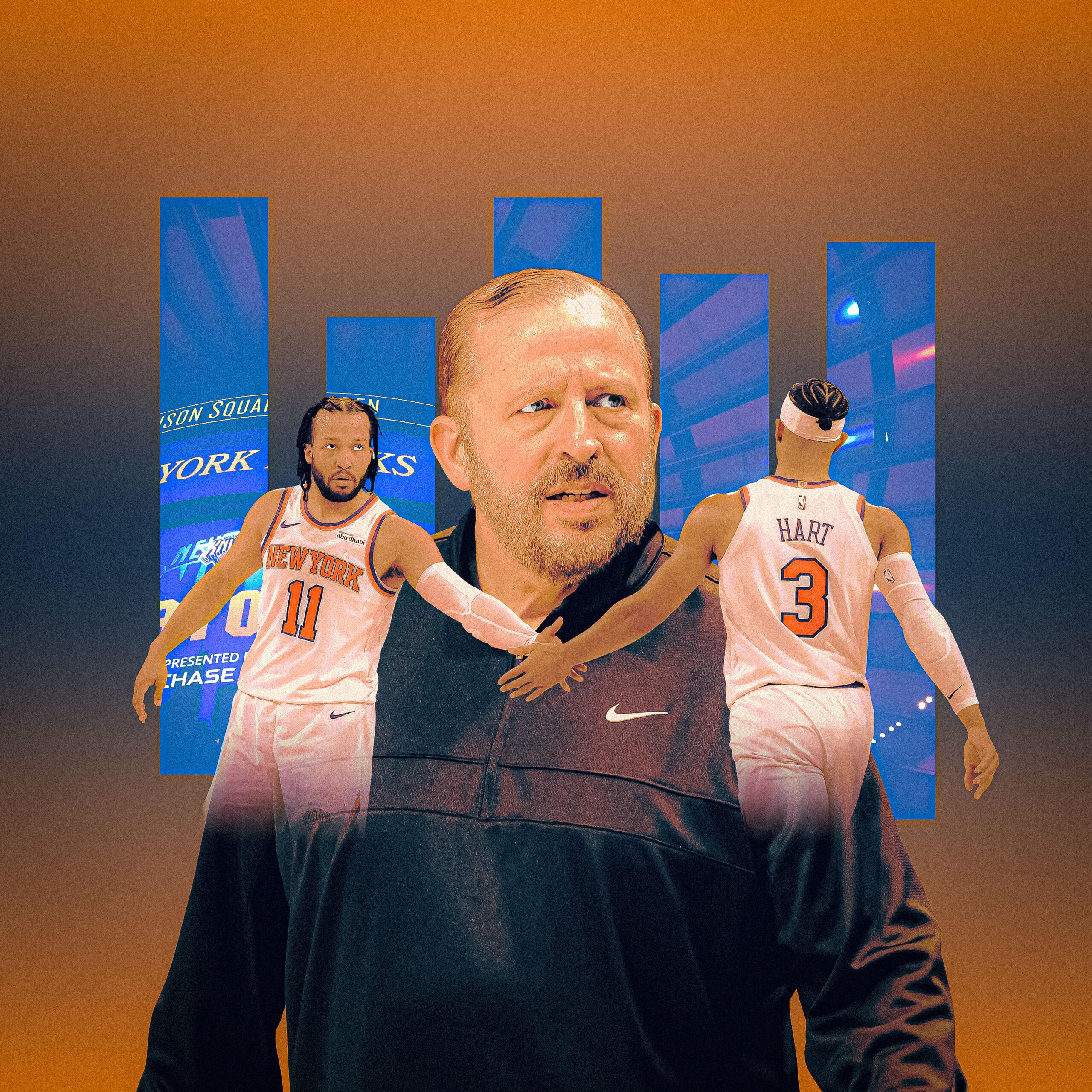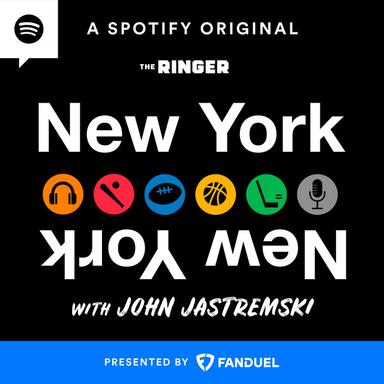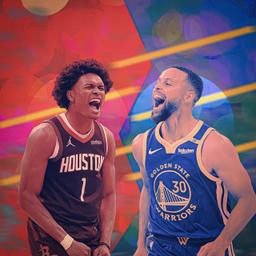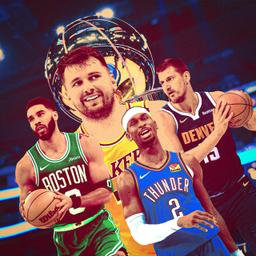
Jalen Brunson was on the deck again late Saturday, winded and wincing and holding his right ankle. For a solid 10 seconds that felt much longer, you could sense nearly 20,000 souls heaving and wincing right with him at Madison Square Garden. Teammates jogged over, hands extended. Brunson scooted back, waved them off, took a beat.
For three seasons now, Brunson has fueled the New York Knicks offense and their aspirations and embodied all of their best attributes—the toughness and resilience and doggedness that spark 50-win seasons and visions of championship parades. When Brunson thrives, the Knicks thrive. When Brunson stumbles, the Knicks stumble. And when Brunson crashes and cringes, a legion of raucous fans cringes with him.
Brunson got up, of course, after that late-third-quarter tumble in the Knicks’ first-round opener against the Detroit Pistons. Brunson always gets up. He made his free throws, changed shoes between periods, and led a furious fourth-quarter comeback capped by a 21-0 Knicks run to fuel a 123-112 win. “There was never a doubt that we [weren’t] going to just lie down and not fight,” Brunson said. “We had to find a way to figure things out and just keep battling. It turned rather quickly.”
The broad strokes and the result were familiar enough, though it would be a stretch to assume they were a given. It’s been hard to know what to expect from the Knicks this spring, one year removed from a thrilling playoff run that ended in Game 7 of the Eastern Conference semifinals, after too many injuries to recount. The Knicks won 51 games this season (one more than last season) and finished third in the East (one spot lower). They’re still built around Brunson’s shotmaking, OG Anunoby’s clampdown D, and Josh Hart’s bravado. But they are not the same.
The Knicks indisputably got more skilled last offseason, with the arrivals of Karl-Anthony Towns and Mikal Bridges. But some percentage of toughness and grit was lost with the departures of playoff heroes Isaiah Hartenstein (who signed with Oklahoma City) and Donte DiVincenzo (who was traded to Minnesota for Towns). The Knicks became a top-five offense this season (up from seventh last season), but their defense slipped from ninth to 13th.
Less quantifiable but still palpably felt was a slippage in fans’ confidence in this reconstituted Knicks roster. It’s impossible to overstate how much Knicks fans (and even many non-partisans) adored last year’s team. They were selfless, tough, and irrepressible, even when key players went down. Heck, the success in the face of injuries made them only more lovable, more admired. The Knicks still have Brunson, Hart, and Anunoby, but they feel a little less gritty with Bridges and Towns in place of DiVincenzo and Hartenstein, and it’s caused some consternation. You could see it in the usual online spaces and hear it on podcasts and local radio—not pessimism per se, just a nagging sense that this team seemed destined to disappoint (as several fans attested in a recent story by James Edwards III at The Athletic).
Call it the curse of rising expectations. Until last season, the Knicks hadn’t registered a 50-win season since 2012-13. The breakthrough was exhilarating, and it was made somehow more satisfying by the Knicks’ uncanny ability to keep winning last spring, even as injuries kept robbing them of key figures: Julius Randle, Anunoby, Mitchell Robinson, and eventually Brunson. When the battered Knicks at last succumbed to the Indiana Pacers in Game 7, they were rightly celebrated for their resolve. Any disappointment was eclipsed by admiration.
Anyone watching had to wonder: Just how good might the Knicks have been if they’d been at full strength? Probably not good enough to take down the eventual champion Boston Celtics in the conference finals, but … maybe?
The goal of the Knicks’ offseason was to eliminate that question. So they went all out to acquire Mikal Bridges, an elite 3-and-D specialist, from the Brooklyn Nets, a deal that cost them, in part, five first-round draft picks. Then, at the start of training camp, they traded Randle and DiVincenzo to Minnesota to acquire Towns, an All-Star and one of the league’s most skilled centers. Hartenstein was lost to salary-cap constraints when the Thunder made an offer that the Knicks, by rule, could not match.
The Knicks gained firepower and versatility but lost a ton of rebounding, interior muscle, and clutch shooting—along with a healthy dose of intangibles. DiVincenzo’s feistiness and Hartenstein’s physicality helped define last year’s Knicks. But the Knicks couldn’t keep Hartenstein (though they tried) and couldn’t turn down the chance to nab Towns, a significant talent upgrade over Randle.
Would the reconstituted Knicks be better? Worse? Or just different? The winning percentage this season suggests they’re about the same, but fans have worried all season about a perceptible erosion of New York’s defense and its collective tenacity. Something is missing. The Knicks were swept by the Celtics this season and went a startling 0-10 against the league’s three best teams (Boston, Cleveland, and Oklahoma City). Add in the usual debates over coach Tom Thibodeau’s lack of trust in the bench and perceived overuse of his starters, and, well, it’s all made for a more fretful run than anticipated.
Long before the playoffs began, there was speculation about the potential consequences of a first-round exit and whether even a second-round loss might prompt a coaching change. The reality is that the Knicks are, on talent alone, still a notch below the Celtics and Cavaliers and shouldn’t be expected to beat either in a best-of-seven series—not that reality and patience apply in the NBA, or to the Knicks in particular. When you make the second round two years in a row, then trade a boatload of draft picks and players to upgrade the starting lineup, people (read: the fans and the owner) expect more.
And though Towns was never regarded for his defense or toughness in his nine years in the Twin Cities, he understands what’s expected in New York.
“They always talk about grit here,” Towns, a New Jersey native who was born in 1995 and raised on Knicks lore, said after Saturday’s win. “And my time growing up in this area, you always know that the Knicks are known for one thing, if anything—they’re going to go out there, and they’re going to fight.”
Can this similar-but-different edition of the Knicks make another leap in the coming weeks? Can they recapture last year’s spirit? There were momentary doubts on Saturday, as the Pistons bottled up Brunson and surged to a nine-point lead in the third quarter. Then Brunson got fouled by Dennis Schroder and tweaked his right ankle—the same one that cost him 15 games late in the regular season. He made his free throws, then disappeared between quarters. “I think he grabbed his cape,” Thibodeau quipped. No, Brunson clarified, just a change of shoes.
Something else changed, too. Towns scored a quick five points to open the fourth. Cameron Payne, another addition from New York’s busy offseason, scored five points in a row himself, then hit a 3 to tie the game at 98-98. Brunson hit a tough driving floater. Towns intercepted a Pistons inbound pass, leading to a fast-break layup for Brunson. A brief surge turned into a full-on flood.
Soon, the Knicks were up by double digits, and the Garden was bouncing. It felt like last spring again. Different, but the same.






